Warnings About the Sturgis Rally Have Come Tragically True
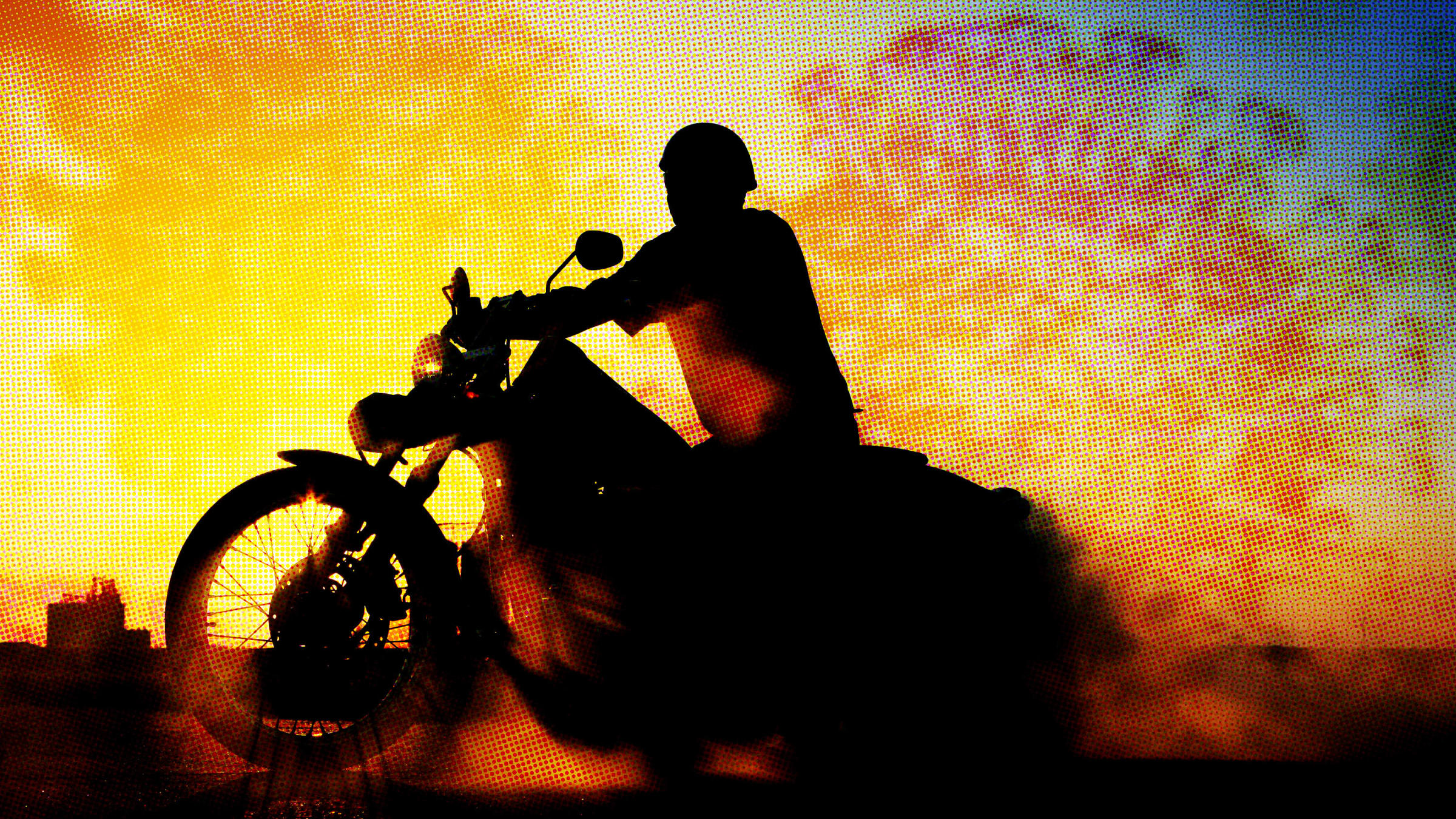
Photo Illustration by The Daily Beast / Photos Getty
Unlike Lollapalooza in Chicago, the Sturgis Motorcycle Rally was the perfect storm for a vaccine-era superspeader event.
In western South Dakota’s Meade County, more than one in three COVID-19 tests are currently returning positive, and over the last three weeks, seven-day average case counts have increased by 3,400 percent. This exponential growth in cases is likely attributable to the 81st Sturgis Motorcycle Rally, which drew an estimated half a million visitors to Meade County and its environs from Aug. 6 through 15, potentially acting as a superspreader event.
The pandemic is surging nationally, not just proximal to biker chaos in South Dakota. Defined in large part by the emergence of the highly transmissible Delta variant, the United States is experiencing its fourth surge of COVID-19 right now, and our nationwide case counts have increased by 64.4 percent over the last 21 days. (For more on our methodology, see our note at the bottom of this column.)
But while Southern states have been the main drivers of this surge thus far, the recent spike in cases in South Dakota warrants special concern.
The state more broadly has witnessed a 686.8 percent increase in daily case counts over the past three weeks, currently more than 10 times the nationwide rate. Meade County’s post-Sturgis uptick is certainly a contributor to this state-level increase, but neighboring counties have experienced a sharp incline in cases, too—ranging from a 1,900 percent increase in the past three weeks in Butte to a 1,050 percent increase in Lawrence.
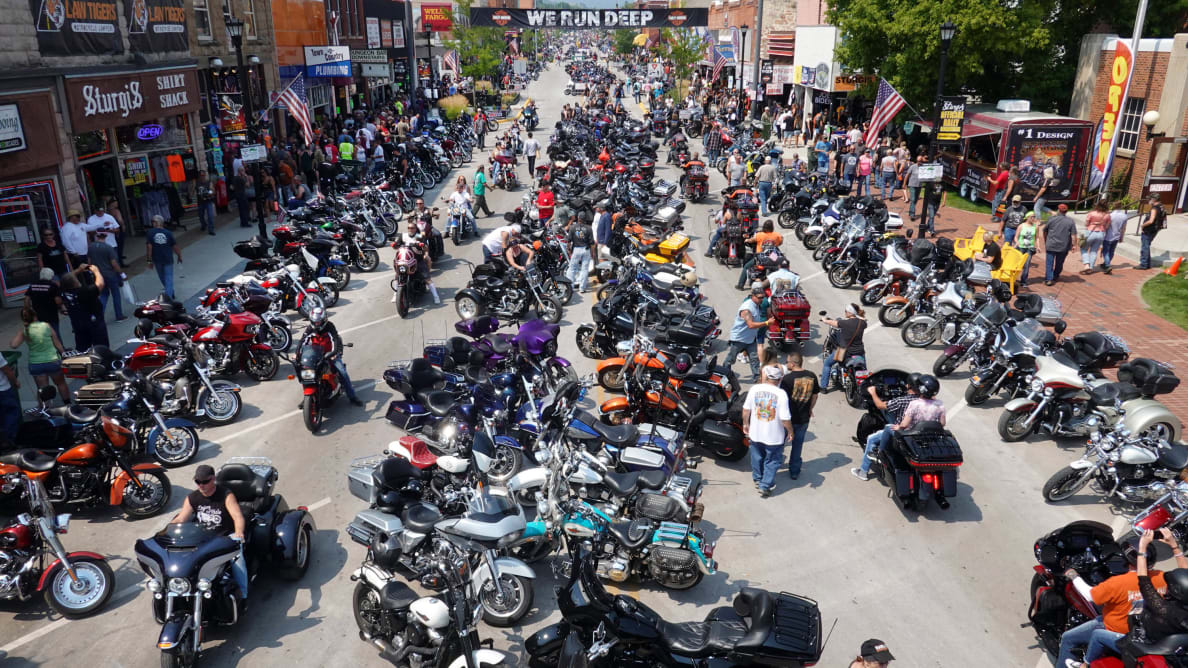
Scott Olson/Getty
Those two counties are also key focal points for the rally, which is not, in reality, confined to Sturgis. And because the rally is widely attended by residents all across South Dakota, it’s not surprising that counties further away—like Charles Mix County, which saw a 1,500 percent increase—are experiencing an incline in cases, too. Indeed, the event could have a regional impact: As the Washington Post reported Thursday, early numbers from local health officials have already connected at least 121 cases in five different states to this year’s rally. It’s possible that these cases might prompt outbreaks of their own and thus should be monitored carefully.
The Sturgis Motorcycle Rally represents the perfect storm for a superspreader event across this region: a large gathering with no testing, no masks, and no vaccination requirements. Though many (but not all) of the goings-on occurred outdoors and thus offered more protection against SARS-CoV-2 transmission than if they hadn’t been, the South Dakota Department of Transportation reported that 525,768 vehicles entered Sturgis over the 10 days of the rally. The sheer number of people in attendance paired with a lack of additional precautions presented prime conditions for viral transmission.
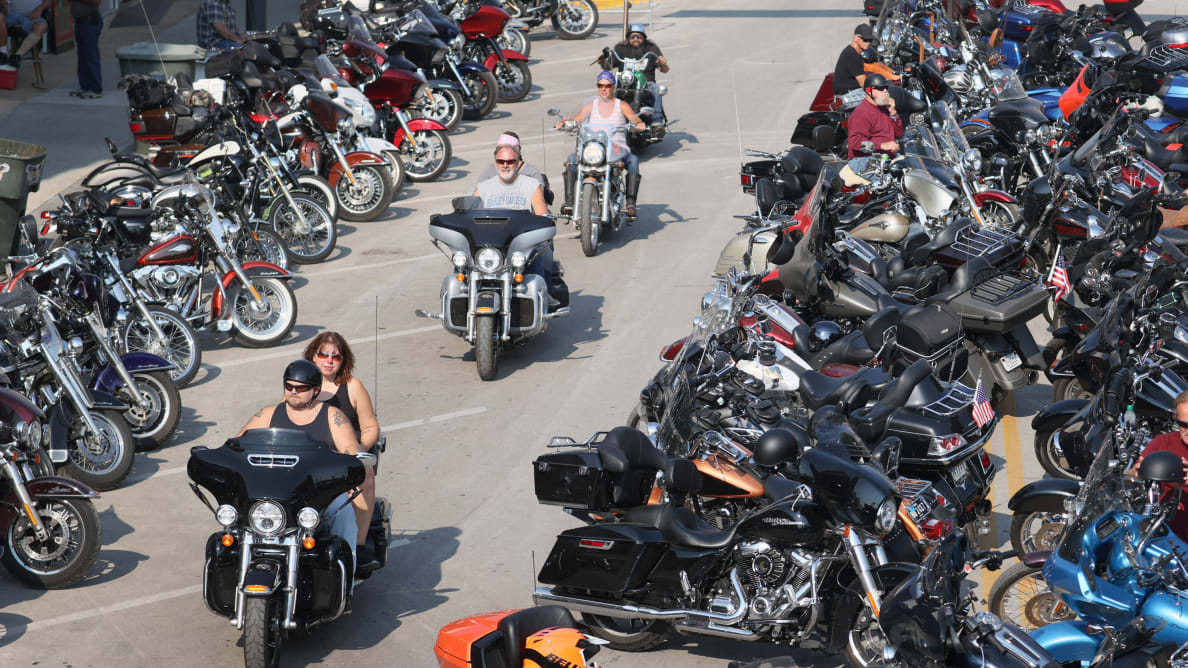
Scott Olson/Getty
Dr. Shankar Kurra, vice president of medical affairs at Monument Health in Rapid City, told The Daily Beast he was living through a nightmare on repeat.
“We knew this was going to happen,” Dr. Kurra said. “It happened last year. It was just playing a reboot of last year pretty much.”
Kurra added that hospitals in the area had 58 patients battling COVID-19 as of early this week. Before the rally, they had “a handful, five to 10,” he said.
The vast majority of new infections in the United States are now occurring in individuals who are not fully vaccinated, including those that have been reported post-Sturgis; however, the uptake of vaccines varies widely across the country. In South Dakota, low trust in the government has been linked to vaccine hesitancy. As elsewhere in the U.S., vaccine hesitancy is higher among Republicans than Democrats in South Dakota, where nearly two-thirds of voters went for Trump in 2020.
Sub-optimal vaccination rates across South Dakota are a fundamental factor in understanding the recent spike in cases. In the United States, 51.6 percent of the total population is fully vaccinated, according to the CDC. But in Meade, only 38.3 percent of the total population is vaccinated. In nearby Lawrence County, the proportion of fully vaccinated residents is 37.4 percent and. at 26 percent, rates are lower yet in Butte.
Dr. Kevin Weiland, who works at the Rapid City Medical Center, which is not affiliated with Monument Health, said the Sturgis surge was not a surprise. But he bemoaned the extent to which unvaccinated people could put even those who had shots in greater danger, citing one senior care facility in the region he said had 17 residents who were infected with COVID, 15 of them vaccinated.
“These guys were vaccinated early on in the pandemic,” he said, alluding to the emerging guidance from the CDC that vaccine protection may wane over time, particularly in vulnerable groups. “They were of the greatest risk. It’s just so sad.”
Weiland went on to explain that he was extremely frustrated to see this occurring at a time when vaccines are available, but millions of people were refusing to take them. During the Sturgis rally, several attendees told The Daily Beast they were unvaccinated and would not take a shot.
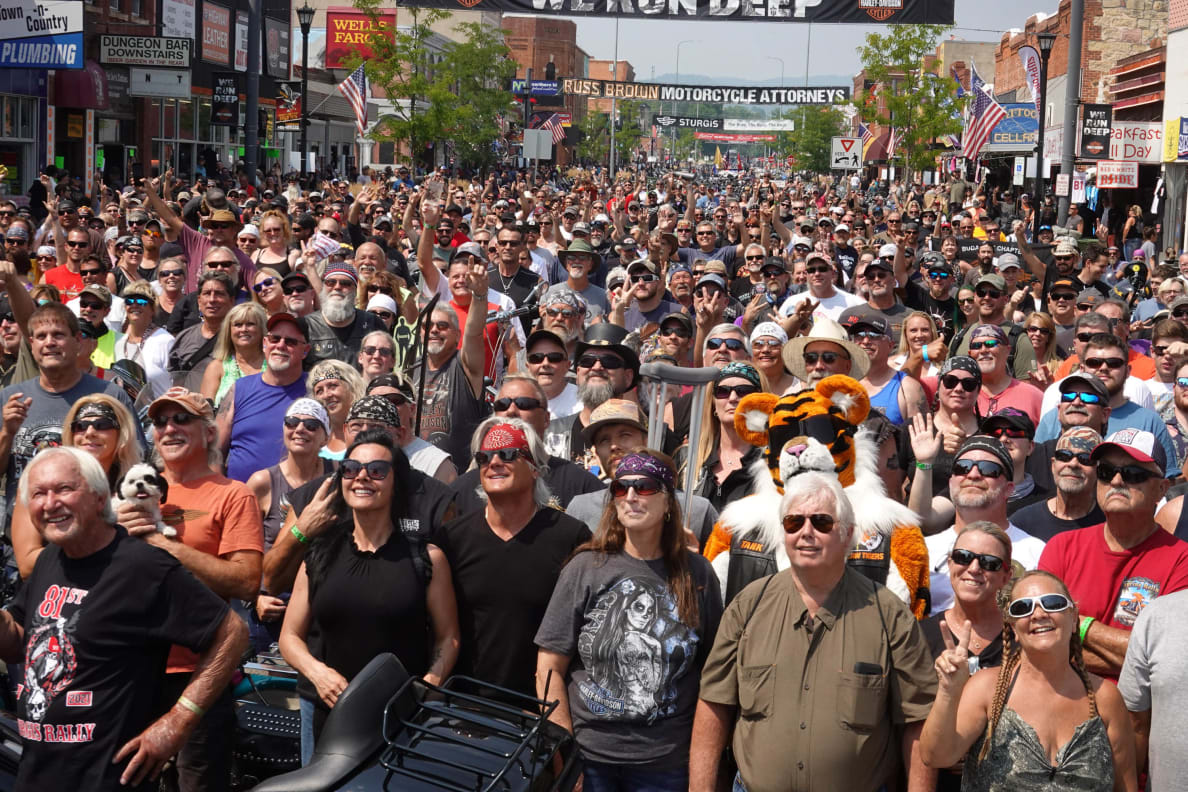
Scott Olson/Getty
“People don’t have to be told what to do. They need to know what to do,” Weiland said. “This is crazy. We should be vaccinated and wearing a mask. This is just crazy, crazy, crazy.”
New infections are strongly associated with vaccination rates across the country, and are an important factor when considering why some large events have been posited as superspreaders, while others have not been.
Take Lollapalooza, for instance. The largely (but not entirely) outdoor four-day music festival in Chicago was held July 29 through Aug. 1, but catered to a very different demographic than the Sturgis Motorcycle Rally.
Despite hosting over 100,000 individuals on each day of the festival, all signs suggest that Lollapalooza didn’t result in a superspreader event. This may be thanks to the fact that Lollapalooza organizers—working in active partnership the Chicago Department of Public Health (CDPH)—required either proof of vaccination or a negative COVID-19 test within 72 hours prior to attendance, and 90 percent of attendees were fully vaccinated. Moreover, masks were required in indoor spaces for the last two days of the event (once more, under the advisement of the CDPH).
Sometimes referred to as “the Swiss cheese model of pandemic defense”, preventive measures like testing, masks, and vaccination act together to protect against infection and perform best in combination than any one of them does alone. It’s a reality that may have spared Lollapalooza from becoming a superspreader event—and could have done the same for the Sturgis Motorcycle Rally, had political will allowed for it.
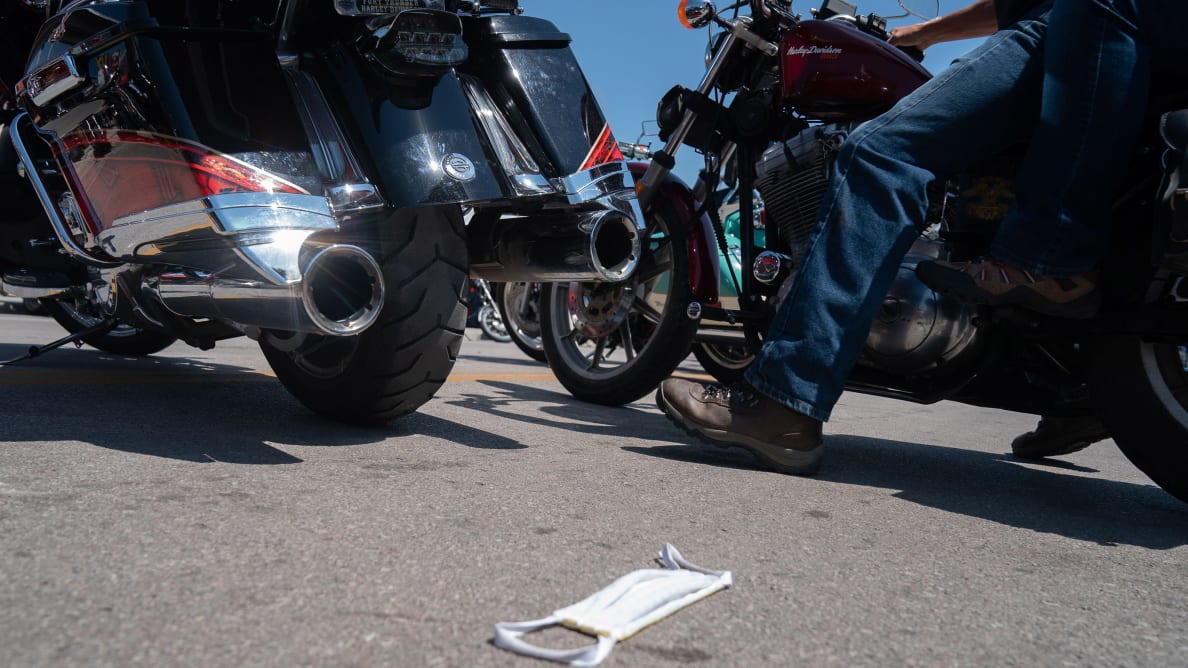
Bryan R. Smith/Getty
Unlike Lollapalooza, which was guided by health officials in enacting and enforcing a multi-layered COVID-19 safety protocol, the Sturgis Motorcycle Rally took place in a state where government has been largely apathetic in its pandemic response. In late July, mere weeks prior to the rally she attended herself, Gov. Kristi Noem went so far as to say that she had “no plans” to encourage vaccination among her constituents.
South Dakota Department of Health spokesman Daniel Bucheli told The Daily Beast the remarkable rise in cases was not unique to South Dakota.
“COVID-19 case spikes are following a national trend being experienced in every state, not just SD,” Bucheli, who served as a deputy press secretary to President Donald Trump’s 2020 campaign from 2019-20, said in an email on Tuesday. “Additionally, as of last night, per the CDC (over the last 7 days), SD is 31st in new cases and 38th in new deaths. Regarding new hospitalizations, we are tied for 35th.” It’s true that COVID-19 deaths in the state remain relatively low; in fact, the CDC’s latest numbers showed the seven-day average of deaths per 100,000 people in the state was one of the lowest in the country. But there have always been lags between surges in cases and deaths from this virus.
And the degree of political indifference is particularly jarring, not only in the context of the Delta variant, but given the aftermath of last year’s 80th Sturgis Motorcycle Rally as well. Though the exact number of cases attributable to the 2020 rally remains up for debate, it was widely considered to be a superspreader event (despite poorly defended claims to the contrary by South Dakota health officials).
While cases are rising not just in Meade County but also across the state—and the country—there is growing evidence that this year’s rally could soon be considered the same. After all, the Delta variant that is now dominant in the United States is considerably more contagious than its predecessors.
“These viruses mutate,” Weiland, who fled the state for pandemic-ravaged Florida during the rally, told The Daily Beast, before comparing the rise of variants to cannibalistic killer Jeffrey Dahmer.
“Jeff Dahmer was a mutation. It’s going to be worse.”
—with reporting by Tom Lawrence in South Dakota
Methodology: To calculate the 21-day percent change in reported cases, we used seven-day average cases from The New York Times and the following formula: 21-day percent change in cases = [(case count on August 24, 2021 in a given population) – (case count August 3, 2021, in a given population)] ÷ (case count on August 3, 2021, in a given population) × 100. For Butte and Charles Mix counties, we used 0.5 cases reported on August 3, 2021 to calculate the 3-week change in cases, as both reported 0 seven-day average cases on August 3, 2021.

